Info
Subfamily: Pooideae
Genus etymology: Phalaris = "coot" [Greek] refering to a European species whose fruit is enclosed in white scales, resembling the white sheild of a coot (Fulica atra Linneaus 1758)
Species etymology: minor = "lesser" [Latin] smaller than related species
Photosynthetic type: C3 (cool season)
Nativity: naturalized - accidental
First recorded in Hawaiʻi: 1903
Map
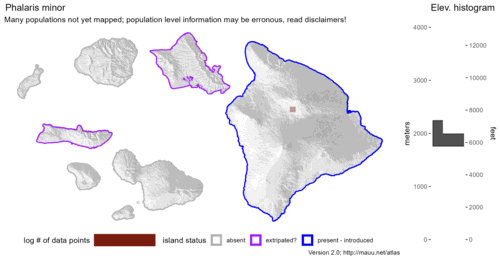
Inflorescence
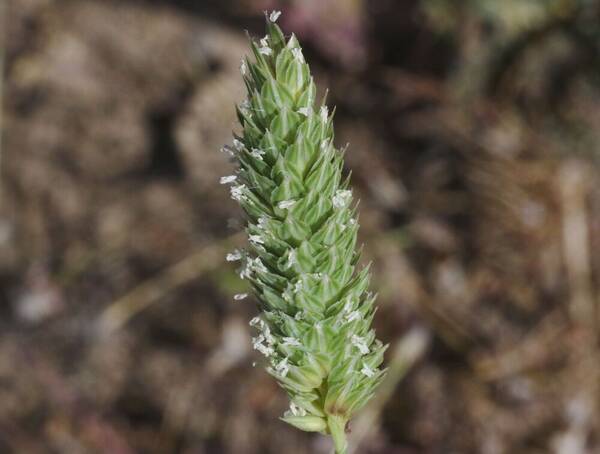 image credit: James_Bailey
image credit: James_BaileyPlant
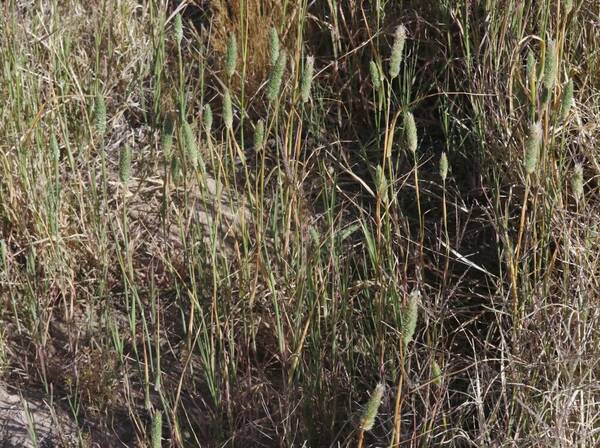 image credit: James_Bailey
image credit: James_BaileySpikelets
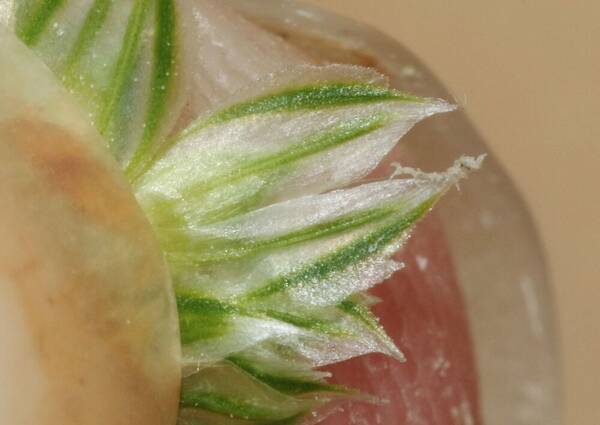 image credit: James_Bailey
image credit: James_Bailey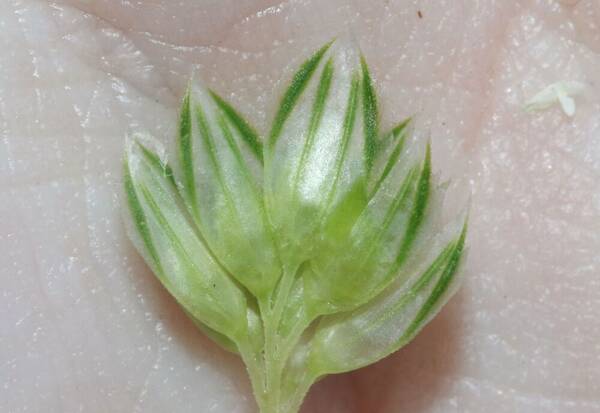 image credit: James_Bailey
image credit: James_BaileyDescription
Plants annual. Culms 10-100 cm, not swollen at the base. Ligules 5-12 mm, truncate to rounded, often lacerate; blades 3-15 cm long, 2-10 mm wide, smooth, shiny. Panicles 1-8 cm long, 1-2 cm wide, dense, ovoid-lanceoloid, truncate to rounded at the base, rounded apically. spikelets borne singly, not clustered. Spikelets homogamous, with 2 florets, 1 bisexual; disarticulation above the glumes, beneath the sterile florets. Glumes 3.5-6.5 mm long, 1.2-2 mm wide, keels winged distally, wings 0.3-0.5 mm wide, irregularly dentate or crenate, occasionally entire, varying within a panicle, lateral veins conspicuous, smooth; sterile florets 1, 0.7-1.8 mm, linear, glabrous or almost so; bisexual florets 2-4 mm long, 1-1.8 mm wide, hairy, dull yellow when immature, becoming shiny gray-brown at maturity, acute to somewhat acuminate; anthers 1-2 mm. 2n = 28, 29.
(Description source: Barkworth, M.E., Capels, K.M. & Long, S. (eds.) 1993. Flora of North America, north of Mexico. Volume 24. Magnoliophyta: Commelinidae (in part): Poaceae, Part 1. Oxford University Press, New York. 911 pp. http://floranorthamerica.org/Phalaris_minor )